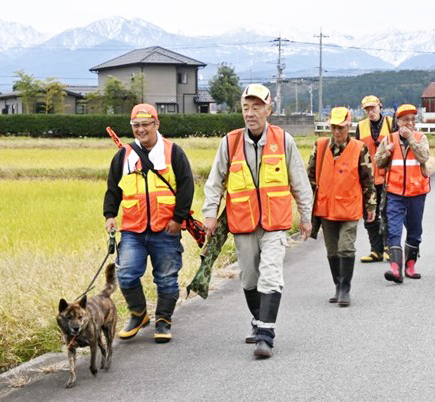Defending Japan
When Japanese soldiers arrived in the northern prefecture of Akita on Thursday, they prepared to face a new kind of threat – one with fuzzy ears and hundreds of pounds of mass. This mountainous region is known for its lush forests, lakes and valleys – and for being a hotspot for this year’s deadly bear attacks in Japan. “The situation has already surpassed what the prefecture and municipalities can handle on their own, and exhaustion on the ground is reaching its limit. Across Japan, at least 13 people have been killed and more than 100 injured since April this year, according to government figures – some of the highest numbers since records began in 2006. In October alone, shoppers were attacked in a supermarket, a Spanish tourist was scratched by a cub at a heritage site, and a trail runner was forced to wrestle a bear in the woods before sprinting to safety. The problem has become so bad that the British government added a bear warning in its travel advisory for Japan.
In Akita, local authorities requested formal military assistance from Japan’s Self-Defense Forces, saying their existing measures – including box traps and bear repellent sprays – weren’t enough. But the troops won’t be culling the bears – they’re not allowed to under Japanese law. Instead, they’ll provide logistical support, like setting up traps and transporting carcasses shot by hunters. The actual culling is reserved for licensed hunters and local hunting associations, some of whom do it recreationally or as a part-time job. But this group is shrinking and aging rapidly amid Japan’s demographic crisis, Reuters reported last year – prompting fears that they alone can’t handle the scope of the problem.
There are also just more bears these days. Bears were once hunted so much in Japan that their population dropped precipitously – but environmental protections were introduced in the 1990s, allowing the bear population to recover. Brown bears, more than doubled in number in 30 years, according to government estimates – reaching 12,000 today. An agitated bear showed up in Sapporo, on Japan’s northernmost island of Hokkaido. Over a seven-and-a-half-hour rampage, it mauled people, damaged public property, caused flights to be canceled, and broke into a military base. In that case, the military had no option but to shoot the bear. Culturally, Shinto and Buddhist traditions emphasize respect for life and nature, which are deeply valued in Japan black bears are sometimes revered as mountain deities. But at the same time, bears are a very real danger that can damage property and harm humans – causing a “deep-seated cultural tension,” wrote the researchers.
Bearly Japanese
Our son-in-law, who is Japanese, hosted a dinner for the family at a local Japanese restaurant. When we picked up our chopsticks, he asked the waiter for fork. “You’re Japanese,” commented my nephew. “Why are you the only one not using chopsticks?” With a laugh, my son in law replied, “I like to show off how well I can eat with a fork.”
The Japanese invented a thief catching robot. After running successful lab trials they decided to test it. After deploying in Tokyo the robot caught 35 thieves in 24 hours.
Much impressed, the Brits ordered the robot for themselves. After deploying in London the robot busted 65 thieves for under 8 hours.
The Aussies ordered the robot. Under 3 hours after its deployment in NYC the robot caught nearly 100 thieves.
Mayor Johnson got one for Chicago and in under 30 minutes the robot got stolen.
A hiker in Japan had a dangerous encounter with three hungry bears. The bears had the hiker trapped up against a big rock, but she was able to escape after setting down her bowl of porridge and slowly backing away.
Which animal can hibernate while standing on its head?
Yoga Bear.
November 12th Birthdays
1961 – Nadia Comăneci, 1961 – Cote De Pablo, 1982 – Anne Hathaway, 1992 – Macy Cruthird
1989 – Russell Westbrook, 1969 – Sammy Sosa, 1945 – Neil Young, 1980 – Ryan Gosling




